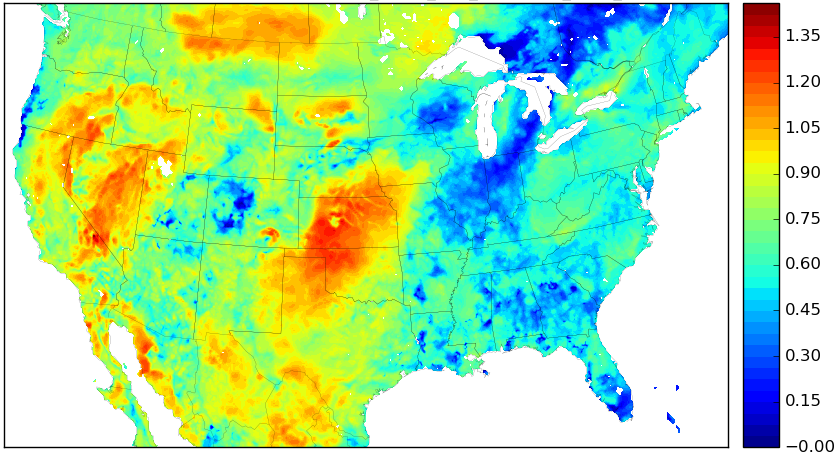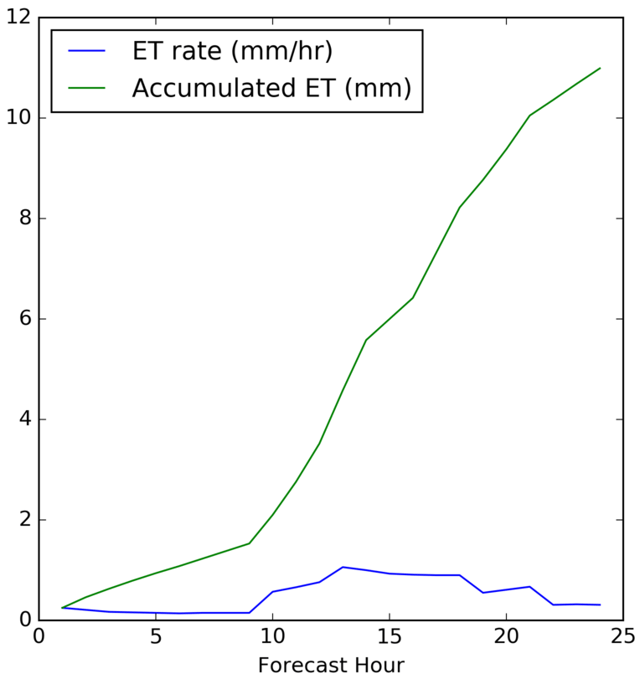Evapotranspiration and Agriculture
by Phillip Spencer, on Apr 10, 2017 2:47:43 PM
Evapotranspiration (ET) is an important process by which water is transferred from the land to the atmosphere by evaporation from the soil and by transpiration from living plants. Estimates of potential ET1 are used by professionals in the fields of hydrology, agriculture, and water management. Many irrigation companies use precipitation data and potential ET estimates to make irrigation recommendations for growers, including WDT’s partner HydroBio, who makes such recommendations across the United States and South America.
The combination of potential ET and precipitation data has proved vital and now is available through WDT’s Insight API. Although there are many ways to estimate potential ET, WDT has settled on the method recommended by the Task Committee on Standardization of Reference Evapotranspiration of the Environmental and Water Resources Institute (EWRI) for the American Society of Civil Engineers. The standardization uses a single equation having fixed constants and standardized computation procedures.
 Figure 1. Potential evapotranspiration rate (mm/hour) derived from a 12-h GFS forecast valid at 1200 UTC 27 January 2017.
Figure 1. Potential evapotranspiration rate (mm/hour) derived from a 12-h GFS forecast valid at 1200 UTC 27 January 2017.
 Figure 2. Potential evapotranspiration rate (mm/hour) analysis for 2100 UTC 21 July 2016 derived from WDT’s in-house 10-km WRF model run.
Figure 2. Potential evapotranspiration rate (mm/hour) analysis for 2100 UTC 21 July 2016 derived from WDT’s in-house 10-km WRF model run.
WDT computes estimates of potential ET from two types of surfaces (“tall” and “short” crops) using analysis and forecasts of several variables, including 2-m temperature, 2-m dewpoint temperature, 10-m wind speed, surface pressure, and various radiation quantities. WDT computes potential ET on both global and regional domains (e.g., Figs. 1 and 2, respectively). WDT’s global estimates of potential ET are derived from both Global Forecast System (GFS) and European Center for Medium Range Weather Forecasting (ECMWF) model forecast data, whereas regional estimates of potential ET are computed from output provided by WDT’s in-house, high spatiotemporal resolution Weather Research and Forecasting (WRF) model runs.
 Figure 3. Potential evapotranspiration rate (blue curve; mm/hour) and accumulated potential evapotranspiration (green curve; mm) for a 24-h forecast period in late January 2017 for a location in central Australia. These data are derived from GFS model output.
Figure 3. Potential evapotranspiration rate (blue curve; mm/hour) and accumulated potential evapotranspiration (green curve; mm) for a 24-h forecast period in late January 2017 for a location in central Australia. These data are derived from GFS model output.
Potential ET estimates for assets can be accumulated over time to provide estimates of the total potential evapotranspiration for a given period (e.g., Fig. 3).
1 Potential ET represents the ET from a uniform surface of dense, actively growing vegetation not short of soil water. Therefore, potential ET represents the maximum possible ET.








